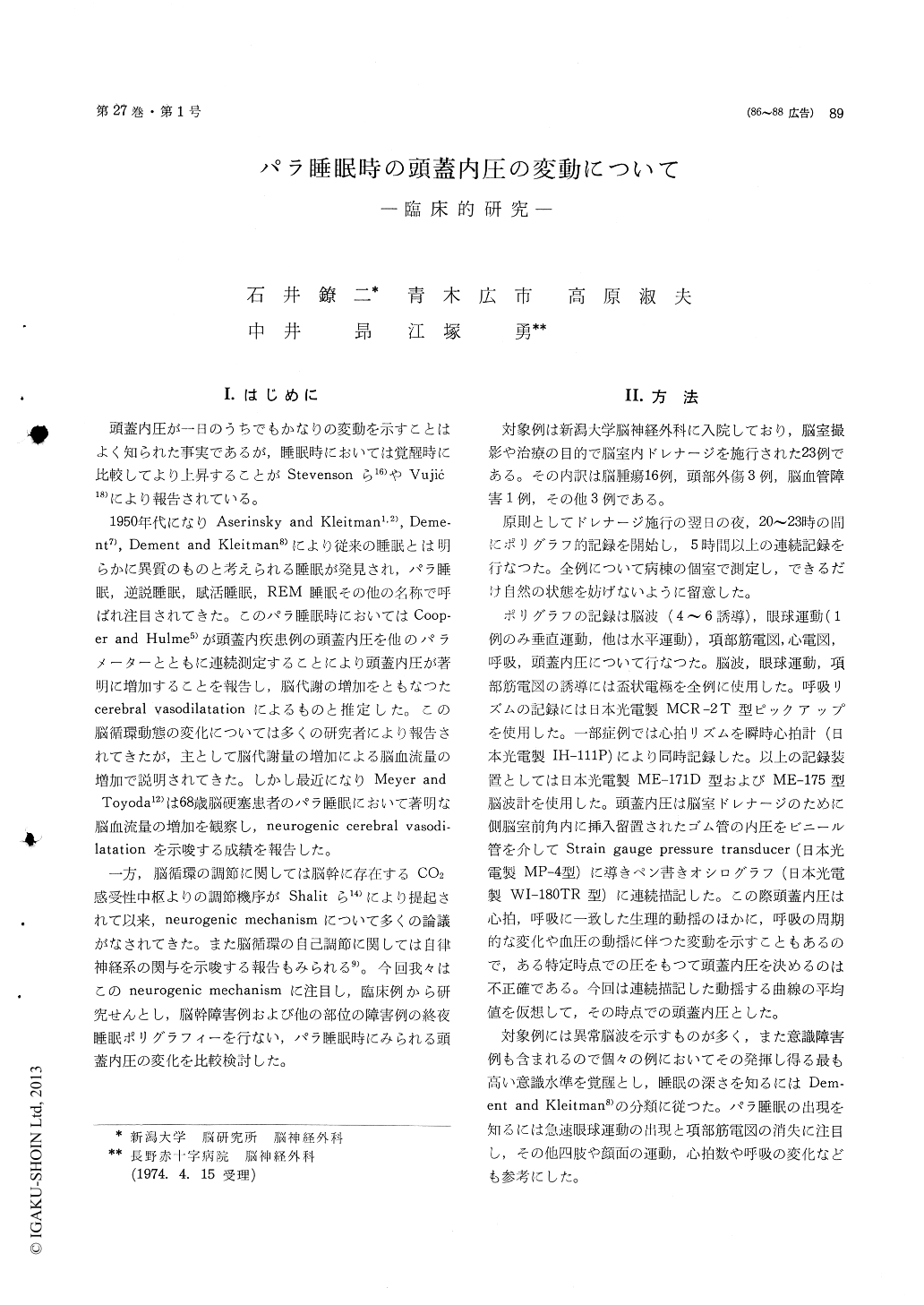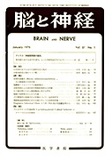Japanese
English
- 有料閲覧
- Abstract 文献概要
- 1ページ目 Look Inside
I.はじめに
頭蓋内圧が一日のうちでもかなりの変動を示すことはよく知られた事実であるが,睡眠時においては覚醒時に比較してより上昇することがStevensonら16)やVujiĆ18)により報告されている。
1950年代になりAserinsky and Kleitman1,2),Deme—nt7),Dement and Kleitman8)により従来の睡眠とは明らかに異質のものと考えられる睡眠が発見され,パラ睡眠,逆説睡眠,賦活睡眠,REM睡眠その他の名称で呼ばれ注目されてきた。このパラ睡眠時においてはCoop—er and Hulme5)が頭蓋内疾患例の頭蓋内圧を他のパラメーターとともに連続測定することにより頭蓋内圧が著明に増加することを報告し,脳代謝の増加をともなつたcerebral vasodilatationによるものと推定した。この脳循環動態の変化については多くの研究者により報告されてきたが,主として脳代謝量の増加による脳血流量の増加で説明されてきた。しかし最近になりMeyer andToyoda12)は68歳脳硬塞患者のパラ睡眠において著明な脳血流量の増加を観察し,neurogenic cerebral vasodi—latationを示唆する成績を報告した。
In order to study the changes of intracranialpressure during para-sleep polygraphic recordingsduring nights were performed in 23 patients withintracranial lesions. Intracranial pressure was meas-ured by the strain gauge pressure transducer whichwas connected to the ventricular catheter.
Most of the patients did not easily fall a sleep,so that para-sleep were encountered in only sixpatients.
Marked increases of intracranial pressure duringpara-sleep were observed in three patients withoutbrainstem lesions, however only small or littleincreases were observed in other three patients withbrainstem lesions.

Copyright © 1975, Igaku-Shoin Ltd. All rights reserved.


